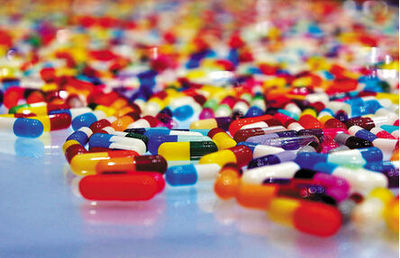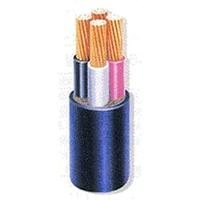Standard Liver Panel(标准肝功能检查):
test | 中文 | Reference range | Reference Range |
| Albumin (Alb) | 白蛋白 | 3.5--5.0 g/dL | 35--50 g/L |
| Alanine transaminase (ALT) or (SGPT) | 谷丙转氨酶/谷氨酸转氨酶 | 9--60 U/L | 9--60 U/L |
| Aspartate transaminase (AST) or(SGOT) | 天冬氨酸氨基转移酶 | 10--40 U/L | 10--40 U/L |
| Alkaline phosphatase (ALP) | 碱性磷酸酶 | 30--120 U/L | 30--120 U/L |
Total bilirubin (TBIL) | 总胆红素 | 0.1--1.2 mg/dL | 1.7--20.4 µmol/L |
| Direct bilirubin | 直接胆红素 | 0--0.3 mg/dL | 0--5.1 µmol/L |
Gamma glutamyl transpeptidase (GGT) | γ-谷氨酰转肽酶 | 0--51 U/L | 0--51 U/L |
5. ProteinTests(蛋白质检查):
test | 中文 | Reference range | Reference Range |
| Human serumalbumin | 人血白蛋白 | 3.5--5.0 g/dL | 35--50 g/L |
| Serum totalprotein | 血清总蛋白 | 6.5--8.5 g/dL | 65--85 g/L |
6. Comprehensive Metabolic Panel (CMP)(综合代谢检查):
是一组有十四项的常规血液化学检查。BMP(八项)+ Protein Tests(Human serumalbumin,Serum total protein)+ LiverFunction Tests(ALP,ALT,AST,Bilirubin)。目的是检查肝肾功能、电解质和体液平衡。具体请看1.BMP, 4. Liver Function Tests 和5. ProteinTests 表里相关的值,这里不再列表赘述。
7. Iron Tests(检查血中的铁):
是测定血中铁的含量、血液运输铁的能力和铁的儲存量。用于各型贫血的鉴别诊断(如:缺铁性贫血、再生障碍性贫血、铁粒幼红细胞贫血和慢性溶血性贫血等)。需空腹12小时抽静脉血检查。
test | 中文 | Reference range | Reference Range |
| Serum iron | 血清铁(血液内游离的铁离子) | Male: 65-177 μg/dL; | Male: 11.6-31.7 µmol/L; Female: 9.0-30.4 μmol/L |
| TIBC(Total iron-binding capacity) | 血清总铁结合力/血清运铁容量 | 240--450 µg/dL | 43.0--80.6 µmol/L |
| UIBC(Unsaturated iron-binding capacity) | 未饱和铁结合力 | The UIBC is calculated by subtracting the serum iron from theTIBC. | UIBC= TIBC- Serum iron |
| Transferrin saturation (= Serum iron/ TIBC) | 运铁蛋白饱和度 | Male: 20-50%; Female: 15-50% | |
| Serum Ferritin | 血清铁蛋白(血液内结合状态的铁,检查体内铁缺乏的最灵敏的指标) | Males: 20--250 ng/mL; Females: 12--250 ng/mL | Males: 20--250 µg/L; Females: 12--250 µg/L |
8. Lipid profile(Lipid panel)(血脂检查) :
高血脂增加心血管疾病的风险。需空腹12小时抽静脉血检查。
test | 中文 | Reference range | Reference Range |
| Total cholesterol | 总胆固醇 | recommended <200 mg/dL; moderate risk 200--239 mg/dL;  high risk >240 mg/dL. | <5.2 mmol/L; 5.2--6.2 mmol/L; >6.24 mmol/L |
| High density lipoprotein cholesterol (HDL-C) (good cholesterol ) | 高密度脂蛋白胆固醇 (好胆固醇) | major risk factor <40 mg/dL; negative risk factor >59 mg/dL | x 0.026=mmol/L |
| Low density lipoprotein cholesterol (LDL-C) (bad cholesterol ) | 低密度脂蛋白胆固醇 (坏胆固醇) | recommended <129 mg/dL; moderate risk 130--159 mg/dL; high risk >159 mg/dL. | x 0.026=mmol/L |
| Triglycerides | 三酸甘油酯/甘油三酯 | recommended 30--149 mg/dL (<160) | x 0.011=mmol/L |
9.Thyroid function test(甲状腺功能检查):
test | 中文 | Reference range | Reference Range in SI Units | Interpretation |
| TSH (Thyroid-stimulating hormone)/Serum thyrotropin | 甲状腺刺激激素/促甲状腺素 | 0.4--6 mIU/L 0.3 to 3.0 mIU/L(as of 2003 ) | 0.4--6 mIU/L | <0.4(低) ---possiblehyperthyroidism(甲亢) ; >6(高)---hypothyroidism(甲减). Note: theAmerican Association of Clinical Endocrinologists has revised theseguidelines as of early 2003, narrowing the range to .3 to3.0. |
| T3 / Serum triiodothyronine | 血清三碘甲状腺素 | 80 to 220 ng/dL | 1.23--3.39 nmol/L | <80(低)---hypothyroidism(甲减); >220(高)---Pregnancy,hyperthyroidism(甲亢) |
| Total T4 / Serum thyroxine | 血清甲状腺素 | 4.5--12.5 µg/dL | 58.5--162.5 nmol/L | <4.5 can be indicative of an underfunctioningthyroid when TSH is also elevated. >12.5(高)---hyperthyroidism(甲亢). Low T4 with low TSH can sometimes indicate a pituitaryproblem. |
| Free T4 / Free Thyroxine | 游离甲状腺 | 0.7 to 2.0 ng/dL | 9.0--25.8 pmol/L | <0.7 ---possible hypothyroidism(甲减) |
10.Clotting factor(凝血因子):
test | 中文 | Reference range | Clinical significance |
Prothrombin time | 凝血酶原时间 | 12–15 seconds | Prolonged by deficiency of factors I,II,V,VII, and X, fatmalabsorption, severe liver disease, coumadin anticoagulanttherapy. |
| INR (international normalized ratio ) | 国际标准化比值 | 1.0 2--3 for therapy in atrial fibrilation,deep veinthrombosis,and pulmonary embolism; 2.5--3.5 for therapy in prostheticheart valves | INR used to standardize the prothrombin time andanticoagulation therapy. |
| Partial thromboplastin time (activated) | 活化部分凝血激酶时间 | 25--30 seconds | Prolonged in deficiency of fibrinogen,factors II,V,VIII,IX,X,XI, and XII,and in heparin therapy. |
| Thrombin time | 凝血酶时间 | 10--15 seconds | Prolonged by heparin, fibrin degradation products, lupusanticoagulant. |
11.Cardiac marker(心脏病指标) :
虽然仍有医院、有医生在做CPK-MB test,但这里只介绍一个目前被认为是检测急性心肌梗塞(Acute MyocardialInfarction)最灵敏的检测法---Troponin test(Troponin I onset: 4-6hrs, peak: 12-24 hrs, return to normal: 4-7 days).
Troponin I ReferenceRange | Interpretation (判读) |
0.00--0.09 | Normal |
0.10--0.60 | Possible indication of myocardial damage, unstale angina,congestive heart failure, myocarditis, cardiac surgery or invasivetesting. Clinical correlation is required. |
>0.60 | May indicate significant myocardial injury. Clinicalcorrelation is required. |
12.Cancer marker(癌症指标):
test | 中文 | Reference range | Clinical significance |
| AFP (Alpha fetoprotein) | 甲胎蛋白 | <10 µg/L | Often elevated in liver cancers (hepatocellular) and testicularcancers (non-seminomatous). Raised levels are also present duringpregnancy or some gastrointestinal cancers. |
| CA 15-3 | CA 15-3 | <30 IU/L | Increased in metastatic breast. Raised levels are also presentin other non-malignant conditions (eg. cirrhosis, benign diseasesof ovaries & breast). |
| CA 19-19 | CA 19-19 | <37 IU/L | Increased in pancreatic,hepatobiliary,gastric,and colorectalcancer,gallstones .Its level is best evaluated along with CEAmarker test. |
| CA125 | CA125 | <35 IU/L | Increased in colon, upper gastrointestinal(GI),ovarian, andother gynecologic cancers; during menstruation,pregnancy orindividuals with ovarian cysts,pericarditis,hepatitis,cirrhosis ofthe liver or peritonitis. |
| Carcinoembryonic antigen (CEA) | 癌胚抗原 | 0-2.5 µg/L(nonsmoker); 0-5 µg/L(smoker) | CEA was first identified in colon cancer. Elevated CEA levelsare found in a variety of cancers other than colonic, includingpancreatic, gastric, lung, and breast. It is also detected inbenign conditions including cirrhosis, inflammatory bowel disease,chronic lung disease, and pancreatitis. |
| PSA (Prostate-Specific Antigen) | 前列腺特异性抗原 | 0-4 ng/ml | PSA is prostate-specific, not cancer-specific. A variety ofconditions can raise PSA levels: prostatitis (prostateinflammation), benign prostatic hypertrophy (prostate enlargement),and prostate cancer. |
ZT:闽姑
 爱华网
爱华网


